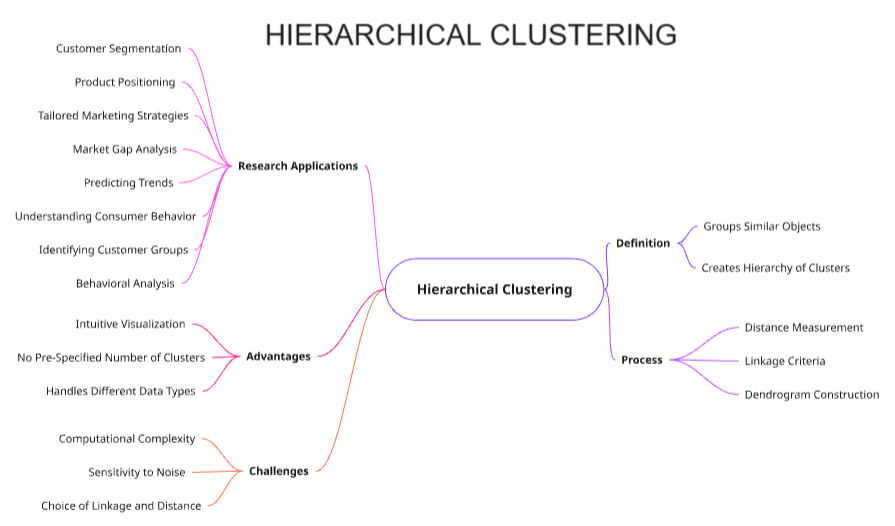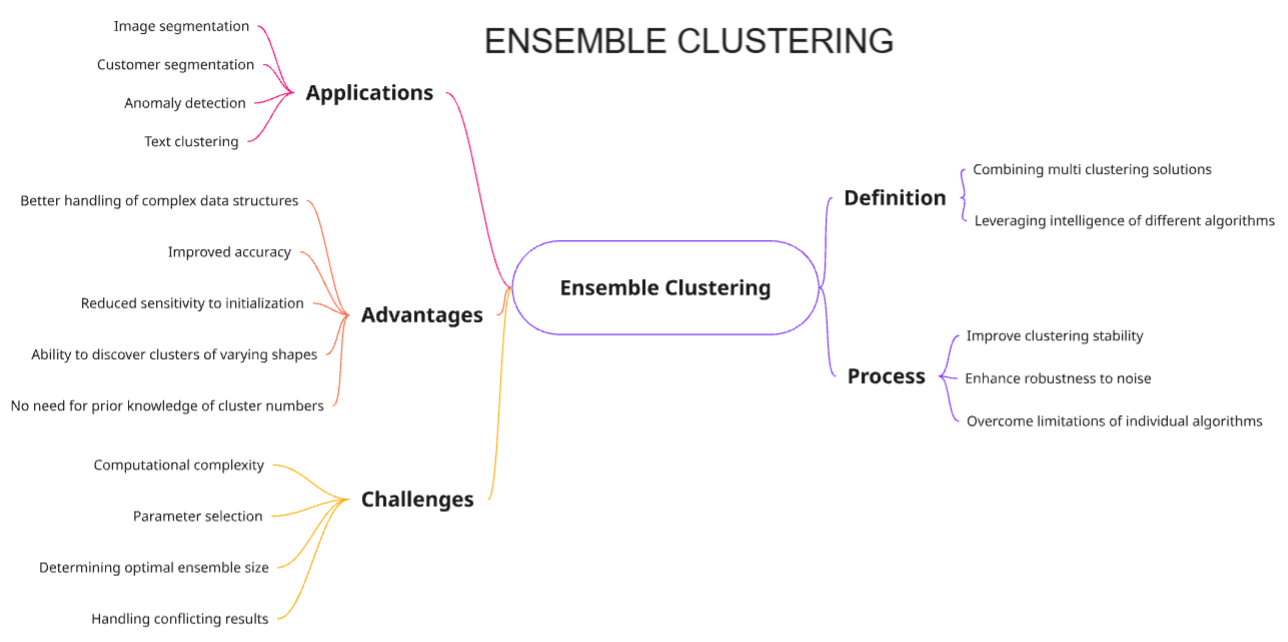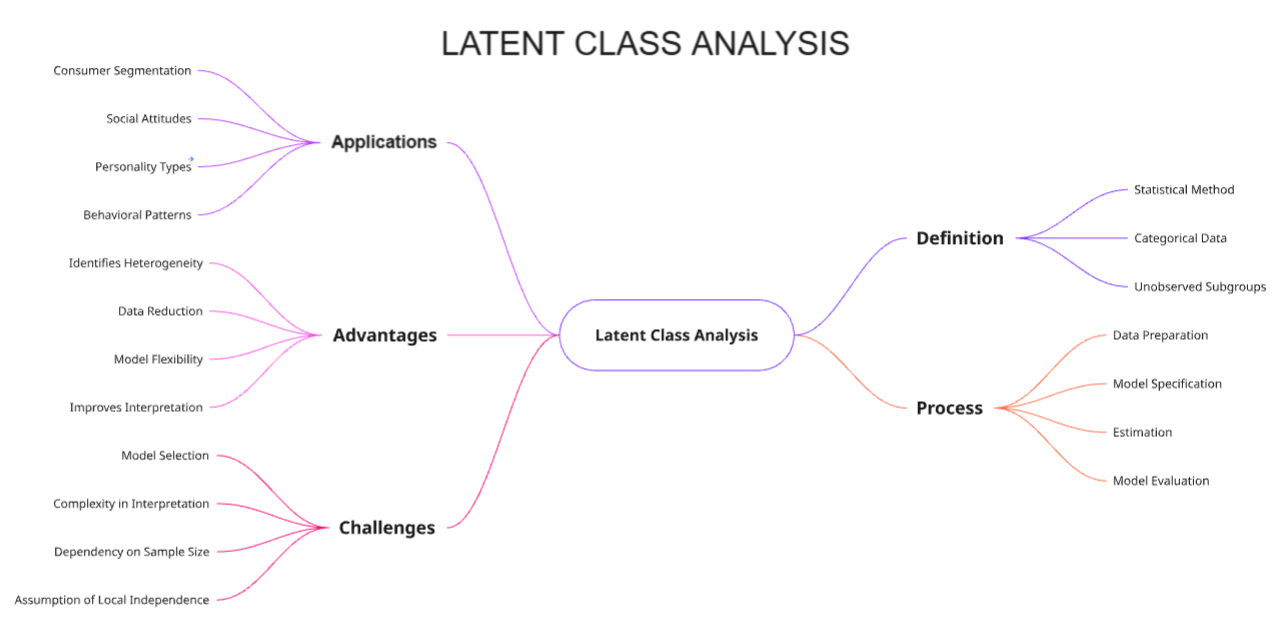Discovering Natural Customer Groups
Cluster analysis is an unsupervised machine learning technique that groups customers with similar characteristics into distinct segments. This data-driven approach reveals natural patterns in customer behaviors, attitudes, and needs.
Hierarchical Clustering
Builds a tree of clusters, allowing exploration of different numbers of segments and nested relationships.


K-Means Clustering
Partitions customers into a predefined number of segments by minimizing within-cluster variance, assigning each customer to the nearest centroid (requires continuous data).
Ensemble Clustering
Integrates the results of multiple clustering algorithms or different runs of the same algorithm to produce a consensus segmentation that enhances stability, robustness, and overall accuracy of customer groupings.


Latent Class Analysis
Uses probability modeling to identify hidden segments based on response patterns, assigning customers to clusters based on their highest probability of membership while handling missing data and mixed variable types.
Two-Step Clustering
Combines pre-clustering and hierarchical methods in two stages, efficiently handling large datasets with mixed categorical and continuous variables while automatically determining the optimal number of clusters.

Strategic Business Applications
Cluster analysis enables data-driven customer segmentation across multiple business functions, from marketing strategy to product development and customer experience optimization.
Marketing Segmentation
Create targeted marketing campaigns by grouping customers with similar purchase behaviors, preferences, and response patterns.
Product Development
Identify customer groups with distinct needs and preferences to guide product feature development and portfolio strategy.
Pricing Strategy
Develop segment-specific pricing strategies based on value perception, price sensitivity, and willingness to pay patterns.
Customer Experience
Customize customer journeys and touchpoint experiences based on segment-specific preferences and interaction patterns.
Retention & Loyalty
Identify high-value customer segments and develop targeted retention strategies to reduce churn and increase lifetime value.
Market Expansion
Identify underserved customer segments and expansion opportunities in new markets or demographic groups.
Systematic Approach to Customer Clustering
Our proven methodology combines advanced analytics with business insight to create meaningful, actionable customer segments that drive strategic decision-making.
Data Exploration
Analyze data structure, identify relevant variables, and prepare datasets for clustering including normalization and feature selection.
Cluster Formation
Apply multiple clustering algorithms, determine optimal number of clusters, and validate cluster stability and meaningfulness.
Segment Profiling
Profile each segment with rich characteristics, develop personas, and create actionable recommendations for targeting and engagement strategies.